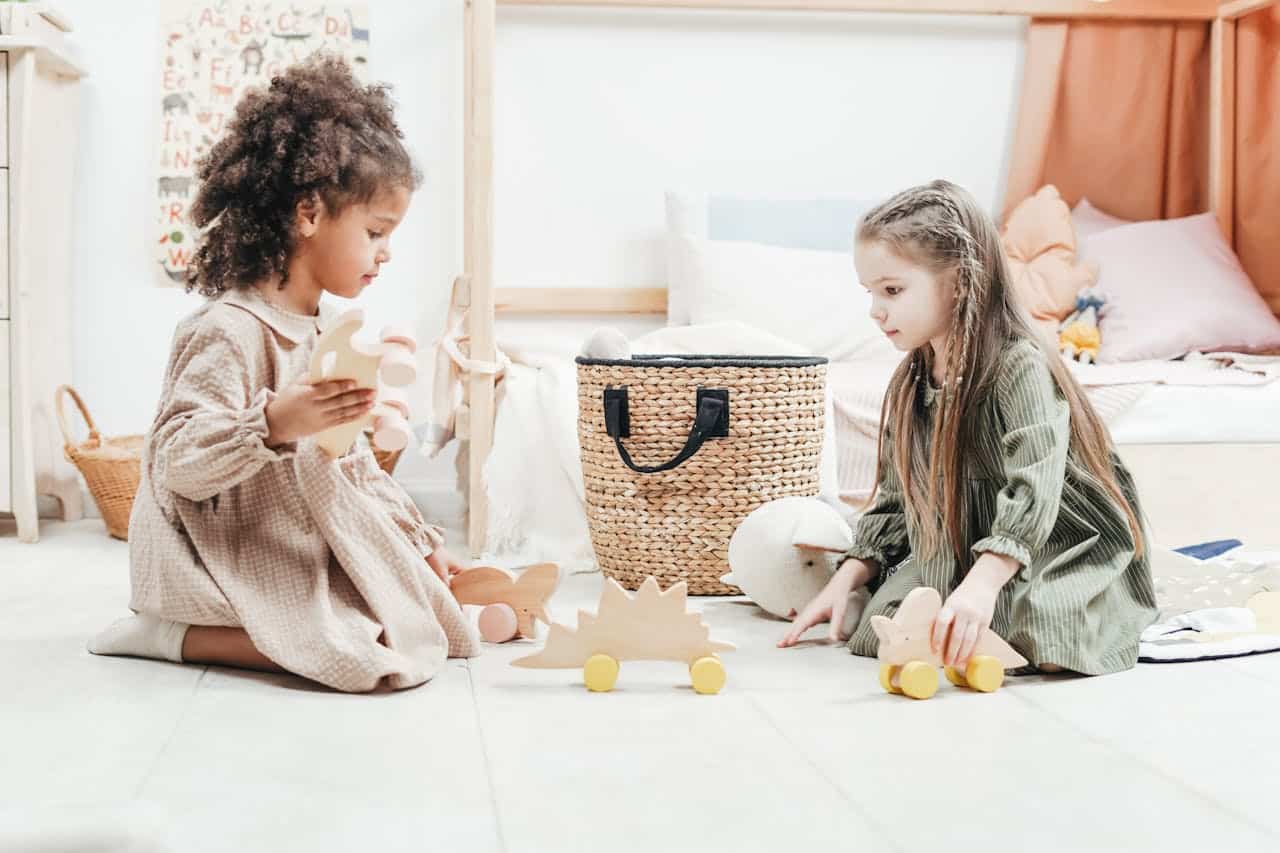For parents of nonverbal children, every day brings unique challenges and opportunities. If you’re seeking ways to help your child develop communication skills, you’re not alone. Let’s explore how ABA therapy and nonverbal children can achieve breakthrough moments, opening new doors for family connection.
Understanding ABA Therapy and Nonverbal Children
Applied behavior analysis (ABA) therapy stands as a proven approach for supporting children with autism spectrum disorder, particularly those who are nonverbal. Through structured, evidence-based techniques, ABA therapists work to develop communication skills that can transform daily life for both children and their families. This journey begins with understanding your child’s unique way of experiencing the world.
Success Stories
“Move Up ABA has been a lifeline for our family. Before starting therapy, our son struggled with daily routines and communication. Now, he’s more independent and even initiated a conversation with a classmate for the first time! The progress we’ve seen in just six months is truly remarkable.”
- Emily R., Silver Spring, Accountant
“As a single dad, I was overwhelmed trying to manage my child’s behavior. The Move Up ABA team not only provided amazing support for my little girl but also taught me practical strategies to use at home. Their in-home sessions fit perfectly with our busy schedule. I’m so grateful for their patience and expertise.”
- Michael T., Rockville, Middle School Teacher
“We were hesitant about starting ABA therapy, but Move Up ABA’s approach put us at ease from day one. Our twins have made incredible strides in their social skills and self-regulation. The therapists are like extended family now, and we couldn’t be happier with our decision to work with them.”
- Aisha and James L., Simpson, Police Officers
The Journey of Communication Development
When it comes to nonverbal communication and early intervention, timing matters. Children with autism often experience speech delays, making it crucial to start building communication foundations as early as possible. Our board certified behavior analyst team understands that every child’s journey is unique. By recognizing and celebrating each small step forward, we create a positive environment for growth and development.
Beyond Words: Alternative Communication Methods
Visual Supports and Sign Language
Many nonverbal individuals benefit from visual supports to express their needs. For parents just starting this journey, imagine a morning routine where your young child can point to a picture card showing “hungry” instead of experiencing frustration at breakfast time. These simple but powerful tools help bridge the gap in functional communication.
Picture Communication Systems
Morning Routine Cards: Help your child navigate their morning routine with cards showing tasks like “brush teeth,” “get dressed,” or “eat breakfast.” Many parents find that this simple visual support reduces anxiety and promotes independence.
Emotion Cards: When your child has difficulty expressing feelings, they can point to pictures showing “happy,” “sad,” or “tired.” This helps prevent problematic behavior that often stems from difficulty expressing emotions.
Choice Boards: Create opportunities for your child to make decisions by showing pictures of available options, like “apple” or “banana” for snack time. This builds confidence and encourages social communication.
Basic Sign Language
Teaching children with autism simple signs can open new doors for communication. Start with essential signs like:
“More” – perfect for mealtimes
“Help” – reduces frustration during complex tasks
“All done” – helps transition between activities
“Please” and “Thank you” – builds social interaction skills
Many autistic kids learn these single words in sign language quickly, making it easier to express basic needs before developing verbal communication.
Using Assistive Devices
Modern assistive technologies have transformed how nonverbal children communicate. Here are real-world examples of how these tools work in daily life:
Tablet-Based Communication Apps
Picture this: Your child at the dinner table, using a tablet to tap icons that speak “I want chicken” or “more water, please.” These speech-generating devices help children participate in family conversations, turning mealtimes into opportunities for natural social interaction.
Visual Schedule Apps
Daily Planning: Parents can create visual schedules showing the day’s activities
Timer Features: Help children understand and prepare for transitions
Reward Systems: Track and celebrate desired behaviors
Getting Started with Assistive Devices
Start Simple
Begin with just 2-3 picture cards for the most important daily needs
Gradually add more as your child learns and grows
Keep cards in easily accessible places around your home
Create Opportunities
Set up “communication stations” around your house
Place preferred items in sight but out of reach to encourage requesting
Use mealtimes and playtime for practice
Consistency is Key
Use the same visual supports across different environments
Share your communication system with teachers and other caregivers
Make multiple copies of frequently used cards
Our ABA therapists work closely with speech language pathologists to select and implement the right combination of these tools for your child. We teach parents how to:
Choose appropriate visual supports
Introduce new assistive devices gradually
Incorporate these tools into daily routines
Recognize and celebrate communication attempts
Each child’s path to communication is unique. What works beautifully for one child might need adjustment for another. Our ABA team helps customize these approaches to match your child’s specific needs and interests, making the learning process both effective and engaging.
The Power of Positive Reinforcement
Every child’s journey is unique, but one universal truth remains: success breeds success. Through positive reinforcement and carefully structured learning, we help children build confidence one small victory at a time.
Creating Success Through Small Steps
Breaking complex tasks into manageable steps is key to building confidence and new skills. Here’s how we make this work in real-life situations:
Example: Teaching Hand Washing
Instead of expecting a child to master hand washing all at once, we break it down into small, achievable steps:
Turn on water
Get soap
Rub hands together
Rinse hands
Turn off water
Dry hands
Each step becomes a victory to celebrate, making the entire process less overwhelming. This discrete trial training approach works wonders for many daily activities:
Morning Routine Example:
Putting on clothes
First success: Pushing arms through sleeves
Next victory: Pulling up pants
Final achievement: Complete dressing independently
Mealtime Skills:
Using utensils
Initial win: Holding a spoon correctly
Progress: Scooping food
Achievement: Getting food to mouth without spilling
Making Learning Fun
Learning should never feel like a chore. Here’s how we transform everyday moments into joyful learning experiences:
Interactive Play Ideas

Simon Says with a Twist
Builds following directions skills
Encourages eye contact
Teaches body awareness
Can be played with single words or gestures
Musical Learning
Use nursery rhymes with actions
Incorporate favorite songs into daily routines
Create custom songs for challenging tasks Example: “Clean up, clean up, everybody do their share” while organizing toys
Movement Games
“Red Light, Green Light” for impulse control
“Follow the Leader” for imitation skills
Dance parties for motor skills and social interaction
Building Social Interaction Skills
Developing Eye Contact
Eye contact is a gateway to deeper social connections, but it needs to be developed gently and naturally. Here’s how we approach it:
Practical Techniques:
Playful Approach
Hold favorite toys near your face
Play peek-a-boo games
Use bubbles and track them together
Natural Opportunities
Place preferred items at eye level
Create “look and wait” moments during play
Celebrate brief moments of eye contact with immediate positive reinforcement
Progressive Steps
Start with quick glances
Build to longer looks
Graduate to natural eye contact during conversations
Encouraging Peer Connections
Building friendships and social skills takes time and support. Here’s how we create opportunities for successful social interaction:
Structured Play Activities:
Partner Games
Simple turn-taking activities
Collaborative building projects
Shared sensory experiences
Small Group Activities
Structured group games
Art projects that require sharing
Music and movement activities
Tips for Parents
Celebration Strategies
Create a “victory dance” for accomplishments
Use a sticker chart for visual progress
Share successes with family members
Take photos of proud moments
Social Skill Building at Home
Practice greetings with family members
Role-play common social situations
Use siblings or cousins as peer models
Create structured playdate opportunities
Communication Support
Use clear, simple instructions
Provide visual schedules for activities
Offer choices between activities
Allow processing time between instructions
The Role of ABA Treatment and Behavior Therapy
Our ABA team works closely with parents to:
Identify appropriate reinforcers for your child
Create consistent reward systems
Develop personalized social skills goals
Adjust strategies based on progress
Celebrate achievements together
Every high-five, successful greeting, or moment of shared joy is a stepping stone toward bigger achievements. Our approach combines proven ABA techniques with the understanding that learning should be fun, natural, and rewarding for your child.
Through patient support and positive behavior strategies, we help children develop the confidence to engage with others, express themselves, and build meaningful connections. Each small step forward is a celebration, and each celebration builds momentum toward the next success.
The Role of Speech-Language Pathologists
Collaborative Care Approach
Working alongside speech language pathologists, our approach ensures comprehensive communication development. This team-based approach means your child benefits from multiple areas of expertise working together seamlessly.
Addressing Speech Delays
We focus on both verbal communication and alternative methods to ensure your child has multiple ways to express themselves. This comprehensive approach helps reduce frustration and builds confidence in communication abilities.
Supporting Parents and Families
Creating a Supportive Environment
We provide parents with strategies to continue communication practice at home, making every moment a learning opportunity. Our team believes in empowering families with the tools and knowledge they need to support their child’s growth.
Understanding Behavior as Communication
Learn to recognize how problem behaviors often stem from difficulty expressing needs, and discover positive ways to address them. This understanding helps create more peaceful and connected family interactions.
The Move Up ABA Difference
At Move Up ABA, we understand that every smile, gesture, and moment of connection is precious. Our approach goes beyond traditional therapy – we create a nurturing environment where your child can flourish and grow at their own pace. Here’s how we walk alongside you on this journey:
Personalized Care That Grows With Your Child
Every child in our care receives a uniquely tailored program that adapts and evolves as they develop new skills. Our experienced ABA therapists take the time to understand not just your child’s challenges, but also their interests, joys, and what makes them light up with excitement.
Family-Centered Support

We believe that supporting the whole family is crucial for your child’s success. Our team provides ongoing guidance, celebration of progress, and practical strategies that you can use at home. We’re here to answer your questions, share in your victories, and provide support during challenging moments.
Creating Joyful Learning Experiences
Our therapy sessions are designed to feel like play while building essential skills. Through carefully crafted activities and positive reinforcement, we help your child discover the joy of communication and social interaction.
ABA Therapy and Nonverbal Children: Taking the Next Step
Every child deserves the chance to connect with their world in meaningful ways. At Move Up ABA, we’re dedicated to helping your child develop the communication skills they need to thrive. Our caring team brings expertise, compassion, and proven techniques to support your family’s journey.
We understand that taking the first step can feel overwhelming. That’s why we’re here to listen to your concerns, answer your questions, and help you understand how ABA therapy can make a difference in your child’s life. When you’re ready to explore possibilities for your child’s development, our warm and understanding team is here to welcome you.
400 E Pratt St, Floor 8 Baltimore , Maryland 21202, United States
Questions?
Email Us: intake@moveupaba.com
Call Us: (410) 469-1090







